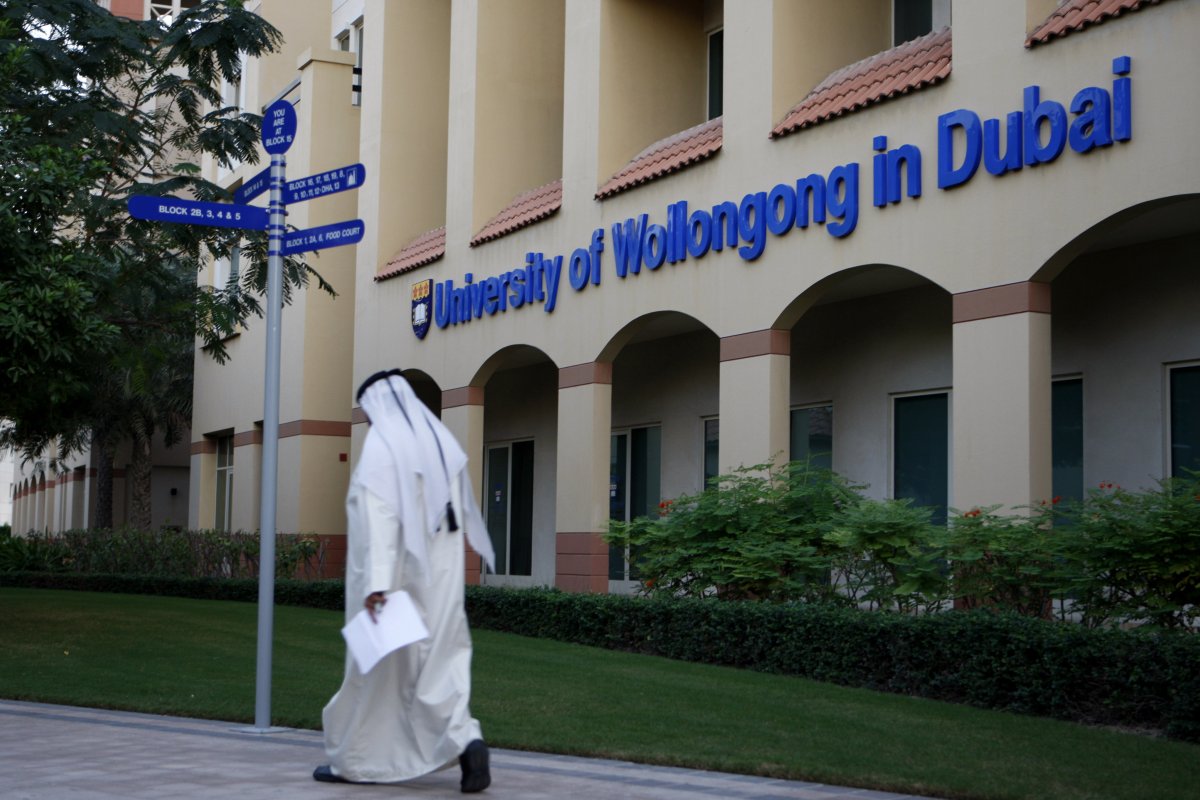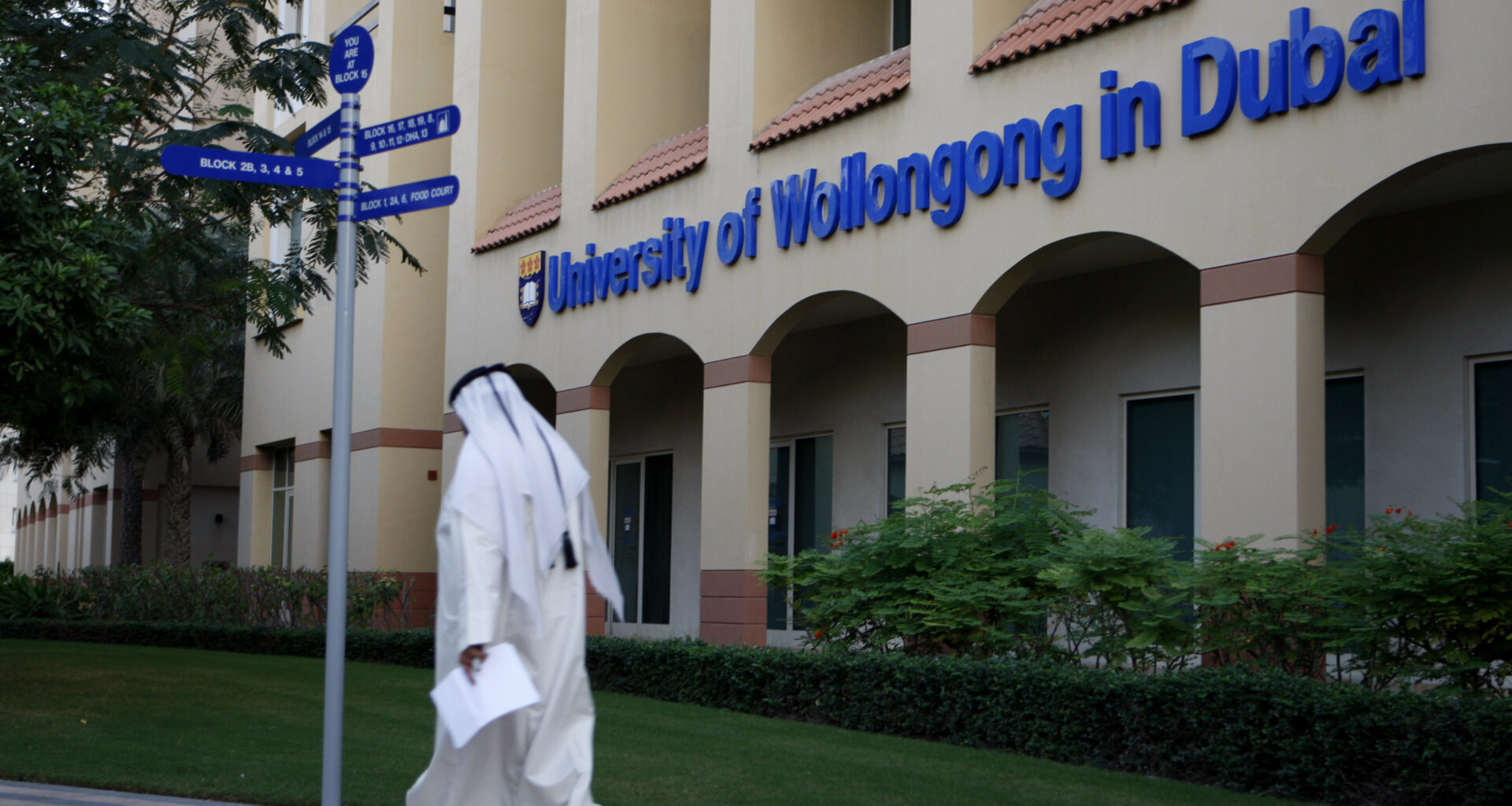President Donald Trump‘s hardline immigration policies are prompting a growing number of international students to bypass the United States for universities in the United Kingdom, Asia and beyond — a shift that could cost U.S. colleges billions.
The administration has urged American universities to cut their dependence on foreign enrollment while ramping up scrutiny of student visa applicants. This spring, the government sought to deport international students for participating in pro‑Palestinian activism and abruptly revoked the legal status of thousands of others — some for minor infractions like traffic tickets. After reversing course, the administration froze new student‑visa appointments and began screening applicants’ social media accounts.

An Emirati student arrives at the building of the University of Wollongong in Dubai, United Arab Emirates, Dec. 28, 2009.
An Emirati student arrives at the building of the University of Wollongong in Dubai, United Arab Emirates, Dec. 28, 2009.
Associated Press
The impact is already being felt. In China, wait times for U.S. visa interviews are so long that some students have given up. Hong Kong universities report hundreds of transfer inquiries from foreign students in America. And applications to British undergraduate programs have surged.
Is the US still accepting international students?
The United States is still accepting international students, but new restrictions and processing delays are making it harder for many to secure visas.
The U.S. remains the top choice for many, but institutions abroad are seizing the moment. The NAFSA: Association of International Educators projects new international enrollment in the U.S. could fall 30 to 40 percent this fall — a potential $7 billion hit to the economy. With many foreign students paying full tuition, the drop could deal a sharp blow to college finances.
Britain, the second‑most popular destination for international students, appears well placed to gain from America’s loss. Despite new limits on post‑study visas under the Labour government, the U.K. is still considered the most welcoming of the major English‑speaking destinations.
Undergraduate applications from China rose 10 percent this year, while those from the U.S. jumped 14 percent — a 20‑year high. Graduate program acceptances climbed an estimated 10 percent, driven by business and management courses.
“The American brand has taken a massive hit, and the U.K. is the one that is benefiting,” said Mike Henniger, CEO of Illume Student Advisory Services.
In Hong Kong, Singapore and Malaysia, demand from Chinese students is rising quickly, said Will Kwong, managing director of AAS Education. Many Western universities have branch campuses in Asia that are cheaper and easier to access than schools in the U.S. or U.K.
“Opting for study in Asia has been a trend since the easing of COVID‑19,” Kwong said. “But obviously it’s been exacerbated by the change of administration in the U.S.”
Why student visas are being revoked
Student visas have been revoked under Trump’s administration for a range of reasons, from participation in political activism — such as pro‑Palestinian protests — to minor legal infractions like traffic violations. In some cases, thousands of students lost legal status abruptly as part of broader immigration enforcement actions. The administration argues these measures are necessary for national security and to uphold immigration laws, but critics say the policy is overly punitive and undermines the country’s standing as a welcoming place for international education.
Countries such as the United Arab Emirates and Kazakhstan are also benefiting by hosting satellite campuses of Western universities. Dubai’s American Academy for Girls principal Lisa Johnson said more graduates are staying close to home. “Every student wants and dreams to go to Harvard,” she said, “but as college options increase in the United Arab Emirates, more and more students are staying.”
“All of a sudden U.S. colleges are asking how to provide diversity, provide access,” said Daniel Palm, who helps American universities set up campuses abroad, “because you have students who want to come to the U.S. and can’t.”
Where did Donald Trump attend college?
Donald Trump attended Fordham University in New York for two years before transferring to the Wharton School at the University of Pennsylvania, where he earned a bachelor’s degree in economics in 1968. Wharton, known for its prestigious business program, has often been cited by Trump as evidence of his academic and business credentials. His time there preceded his entry into the family real‑estate business, which would become the foundation of his public and political persona.
This article includes reporting by the Associated Press.
